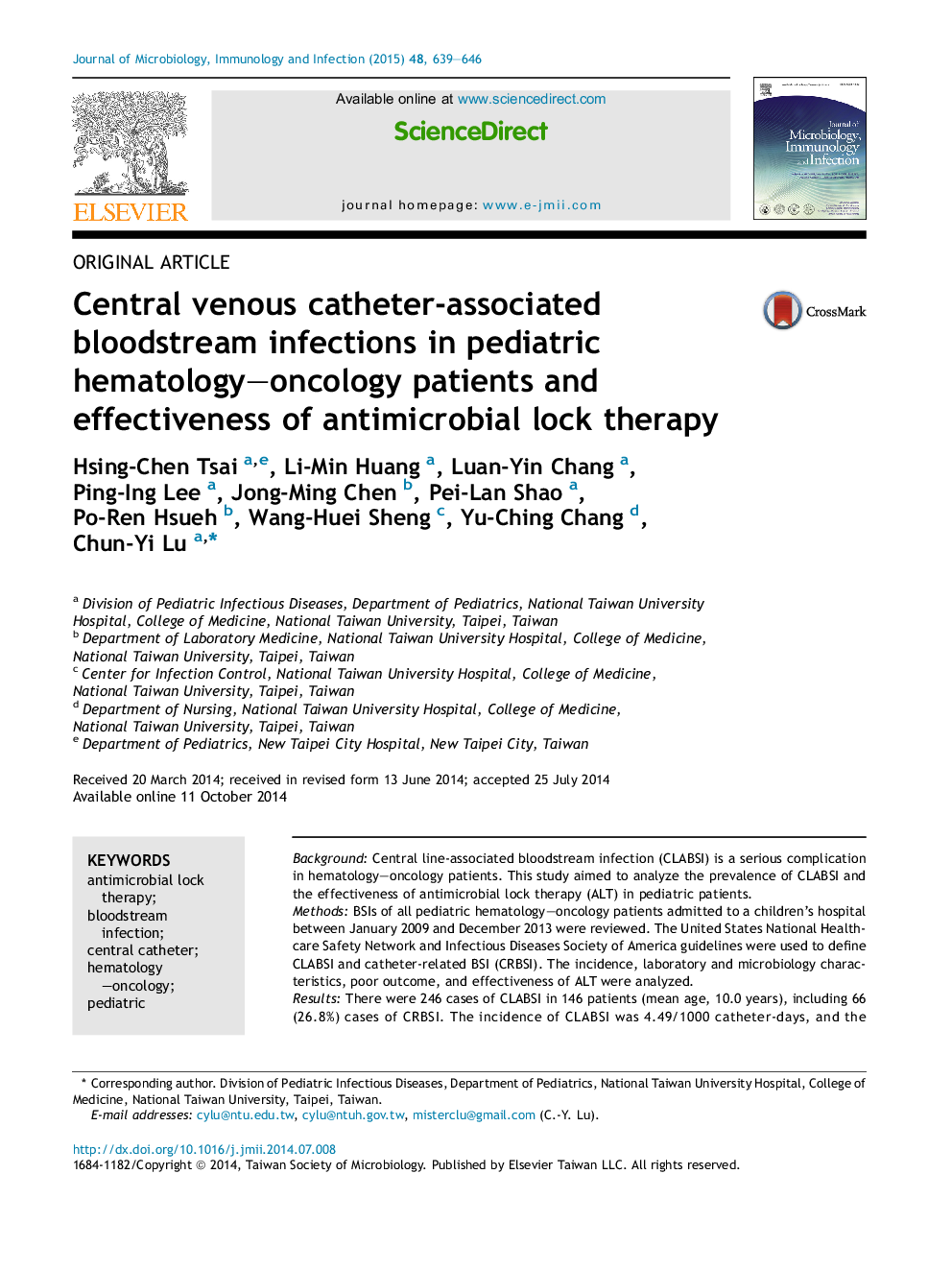| کد مقاله | کد نشریه | سال انتشار | مقاله انگلیسی | نسخه تمام متن |
|---|---|---|---|---|
| 3377803 | 1220052 | 2015 | 8 صفحه PDF | دانلود رایگان |
BackgroundCentral line-associated bloodstream infection (CLABSI) is a serious complication in hematology–oncology patients. This study aimed to analyze the prevalence of CLABSI and the effectiveness of antimicrobial lock therapy (ALT) in pediatric patients.MethodsBSIs of all pediatric hematology–oncology patients admitted to a children's hospital between January 2009 and December 2013 were reviewed. The United States National Healthcare Safety Network and Infectious Diseases Society of America guidelines were used to define CLABSI and catheter-related BSI (CRBSI). The incidence, laboratory and microbiology characteristics, poor outcome, and effectiveness of ALT were analyzed.ResultsThere were 246 cases of CLABSI in 146 patients (mean age, 10.0 years), including 66 (26.8%) cases of CRBSI. The incidence of CLABSI was 4.49/1000 catheter-days, and the infection was responsible for 32.9% of the complications these patients developed and 9.3% of contributable mortality. Patients with acute myeloid leukemia had the highest infection density (5.36/1000 patient-days). Enterobacteriaceae (40.2%) and coagulase-negative staphylococci (CoNS; 20.7%) were the predominant pathogens. In multivariate analysis, older age, male sex, elevated C-reactive protein, acute lymphoblastic leukemia, and candidemia were associated with poor outcome. The success rate of ALT was 58.6% (17/29) for the treatment of CoNS and 78.3% (29/37) for Enterobacteriaceae infections. Patients with candidemia (n = 18) had the highest mortality (33.4%) and catheter removal rate (66.7%). Chlorhexidine as the disinfectant decreased the 1-year CLABSI rate from 13.7/1000 to 8.4/1000 catheter-days (p = 0.02).ConclusionCoNS and Enterobacteriaceae are the predominant pathogens in CLABSI among pediatric hematology–oncology patients. ALT is effective and showed no significant side effect. New disinfection practice and infection control measures can decrease CLABSI.
Journal: Journal of Microbiology, Immunology and Infection - Volume 48, Issue 6, December 2015, Pages 639–646
